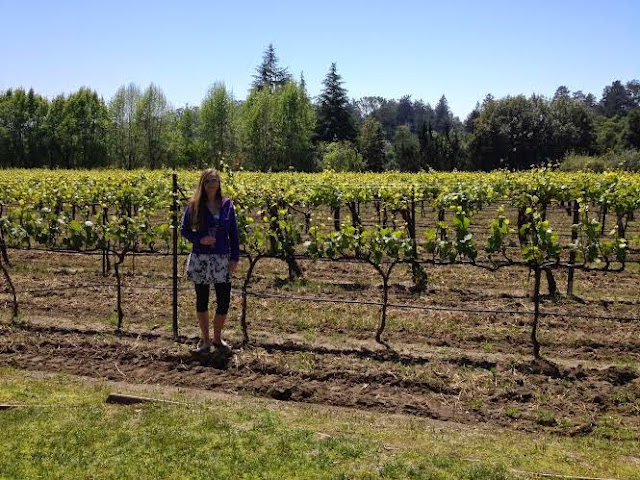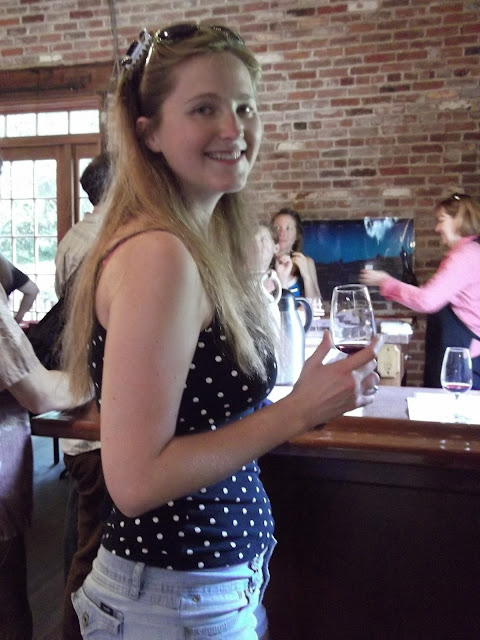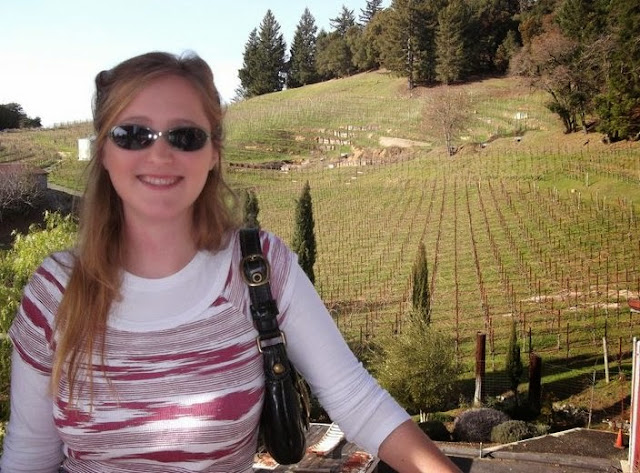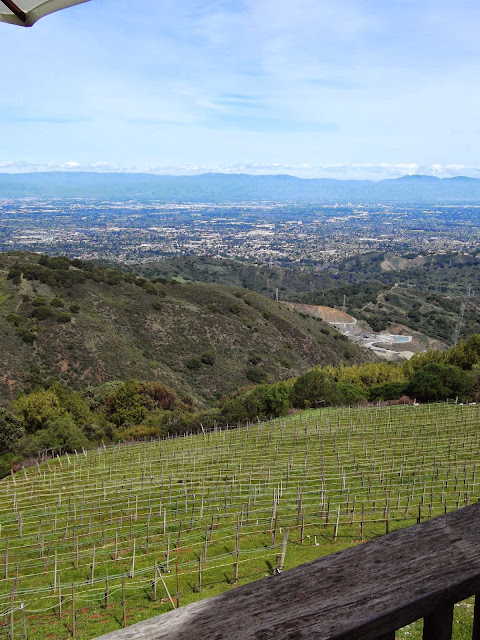The Santa Cruz Mountain Wine Region
When most people think of wine and California, they think of Napa Valley and Sonoma which are located a couple of hours north of San Francisco Bay. However, wine tasting opportunities abound throughout central and northern California. Last weekend I visited one of these lesser-known wine regions: The Santa Cruz Mountain Wine Region. This wine region is one of the oldest in California and it participated in the 1976 Judgement of Paris. In this event, which brought international accord to California as a wine region of superb quality, California wines were blindly taste tested along side French wines by French judges. Much to the judge's surprise they rated the California wines higher than their French counterparts. Currently over 200 wineries ferment, age, and bottle their wines within this region. I am also a little partial to this wine region as I lived in Santa Cruz for four years and tasted at about half of the wineries in the area when I lived there.
 |
| A photo from wine tasting in the Santa Cruz area on my most recent trip to California. |
The Santa Cruz Mountain Wine Region is located about an hour south of San Francisco in the Santa Cruz Mountains. The presence of mountains, creates a plethora of microclimates vintners exploit to develop their grapes' flavors. Pinot noir and chardonnay are the dominant red and white varietals of this region. However, the microclimates allow wine grower's to explore growing grapes less traditional to this region, such as sangiovese and gewürztraminer. As such, most wineries in this area will show case a couple of pino noirs and chardonnays in their tasting flights, with one or two wines less common in this region to mix up the tasting menu.
 |
| Tasting at Picchetti Winery in 2011. |
When it comes to planning a trip to wine country that includes a lot of wine tasting, the Santa Cruz area represents an affordable option. In Napa and Sonoma, it is not uncommon for tasting fees to exceed $15 or $20. Many wineries will waive this tasting fee with the purchase of a bottle of their wine. However, when I was in Sonoma a couple of years ago to waive the tasting fee, we had to buy three bottles of wine. Conversely, in Santa Cruz tasting fees are often less than $10, which are waived with the purchase of one bottle of wine. Also available in this region, available for purchase online (
click here for more info) or at any participating winery (most of them) are wine passports ($45). These little books, which resemble passports in shape, have a page dedicated to each winery participating in the program. Passport holders can take their passport to any participating winery when they are open and receive a complimentary tasting, after which the passport is stamped by that winery. The passports are good for two years, and passport holders can visit each winery once within the two year time period. Many wineries which participate in the program do not have permanent tasting rooms or tasting times. However, on "passport days" which are once eau season these wineries make accommodations to hold tastings somewhere (often at another winery's tasting room) in the area.
 |
| Enjoying myself on a January passport day in 2012. |
Tasting rooms can be anywhere from deep in the local forests, high on ridges with views of the ocean or San Jose, or in downtown Santa Cruz or other nearby cities. Often when spending the day wine tasting up in the mountains, my friends and I packed a picnic lunch to enjoy in the sunshine. For more casual excursions tasting rooms within city limits often have longer hours and are open during the week. In the Swift Street area of Santa Cruz there are 13 wine tasting rooms all within walking distance of each other (
click here for a map).
One thing to note when selecting where to taste is what visitors want to see. Not all wineries have vineyards, and not all vineyards make wine out of the grapes they grow. Often wineries buy their wine from vineyards which only sell grapes, not make wine. Also common are wineries which grow some of their grapes and purchase the rest. In these cases the wines that winery made from the grapes they grew themselves are called "estate". While living in Santa Cruz I had many visitors over the years, and when bringing these visitors wine tasting I made sure to research the wineries ahead of time to ensure vineyards were on the grounds of the wineries we visited. Just because a winery's tasting room is up in the mountains outside of town, does not ensure vineyards are present.
 |
| San Jose with vineyards in the foreground from the deck of a winery in Santa Cruz Mountains. |
Before I end this post I would like to mention a a few of my favorite wineries from the Santa Cruz Mountain Wine Region. My absolute favorite winery in the area is Bargetto in the Soquel area. Barghetto is not a winery with views of vineyards on premises, but its historic tasting rooms dates back to when the winery opened in 1933. The tasting room adjoins a lovely shaded patio that overlooks a creek. I've tasted at Bargetto three times, and the staff has always been very kind and attentive. My favorites are their gewürztraminer and Chaucer's Mead. Gewürztraminer is a sweet white wine that pairs well with asian or any strongly flavorful food. Mead is a wine made from honey, and Bargetto supplies their mead with mulling spices which make it a holiday favorite.
Loma Prieta Winery is another winery I favor. It is located high up on a ridge at the end of a long and winding road, which provides it with amazing views of Monterey Bay. The attendants at Loma Prieta really catered to our preferences when we visited, by offering additional pours of wines not on the tasting menus based on the types of wines we were hoping to buy. Loma Prieta is home to the best petite sirah I have ever tasted.
Saratoga, on the San Jose side of the mountains is home to Cinnabar, so named for the mineral common in the area. Cinnabar offers a trendy tasting rooms with many delicious wines. However, their red blend Mercury Rising is the best selling wine of the entire region, with good reason. I have often seen a bottle of Mercury Rising show up at a potluck or party to disappear within minutes of arrival. Fortunately, this is the easiest Santa Cruz Mountain wine to get a hold of without having to visit the winery. This wine is available in many of the local liquor and grocery stores. I have also seen it at Total Wine in other states.
Lastly, I want to mention MJA. MJA has stylish tasting rooms in Santa Cruz, and outside of town in the mountains. MJA differs form other wineries in that it offers many varietals on each of its tasting room options, including sangiovese and other varietals not often seen in the US, not just California.
In all the Santa Cruz Mountain Wine Region offers great wine tasting experiences for a couple of hours of a whole vacation.


No comments:
Post a Comment